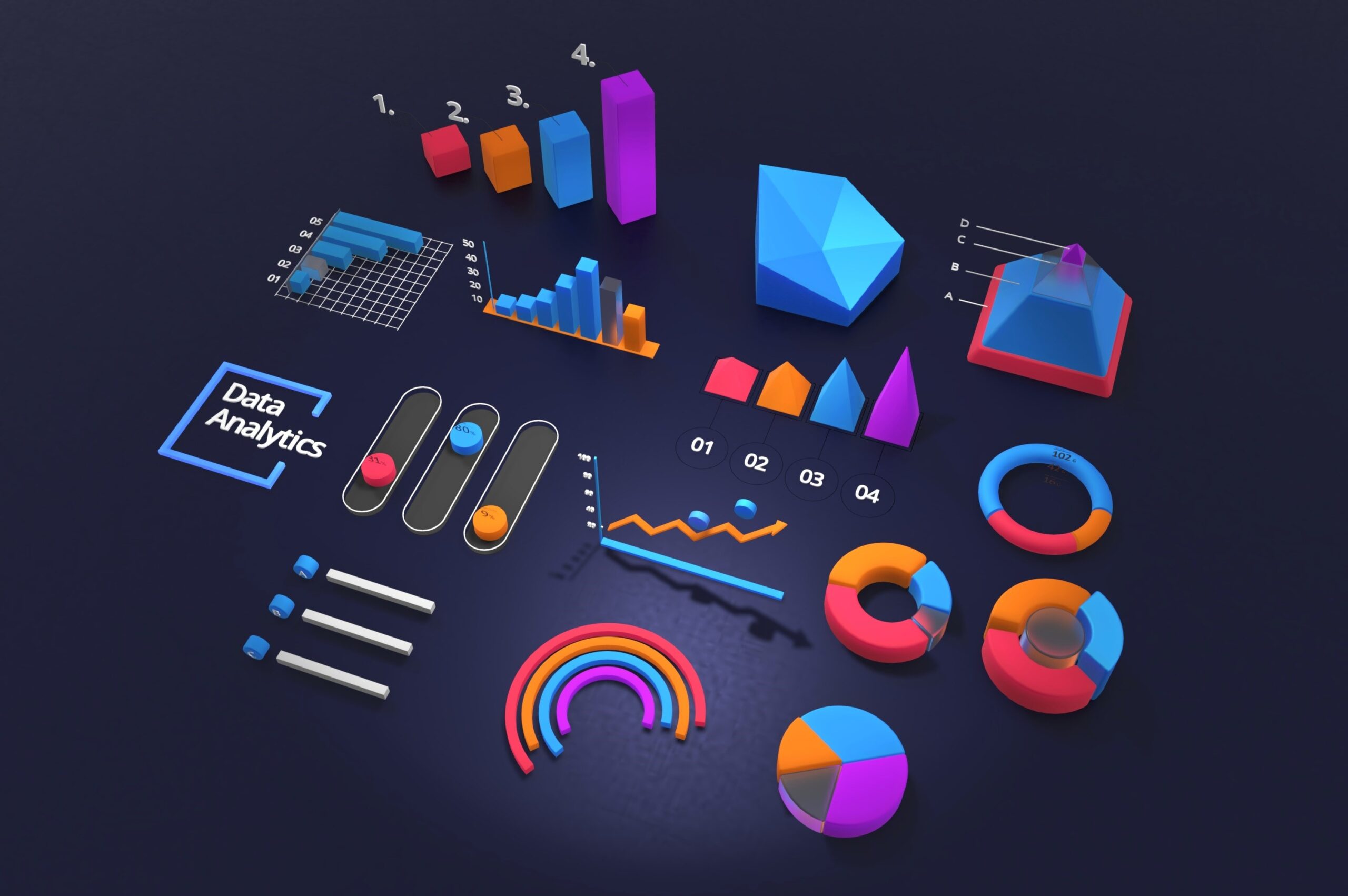- Introduction to Predictive Analytics
- Application of Predictive Analytics in Medical Fields
- Tools and Techniques in Predictive Analytics
- Predictive Analytics in Customer Behavior Analysis
- Challenges and Opportunities of Predictive Analytics
Introduction to Predictive Analytics
Defining Predictive Analytics
Forecasting future events and trends is possible using predictive analytics. The results of this approach include better efficiency, reduced risks, and better outcomes due to better decision-making based on data-driven insights. In predictive analytics models, patterns and correlations are identified by examining past data. The models then use them to predict future events, such as sales trends or customer behavior.
Role of AI in Predictive Analytics
Machine learning and artificial intelligence (AI) are important components of predictive analytics. Using machine learning algorithms, computers can learn and adapt to new data without explicit programming. In contrast to traditional statistical models, these algorithms can analyze and process huge amounts of data much more efficiently. AI systems become more accurate as they process more data in predictive modeling techniques.
Predictive Analytics Models
There are several types of predictive data analytics and models, each with its unique approach to extracting insights from historical data. Some popular predictive analytics models include:
Classification models: These models classify data or groups by categorizing data by specific attributes. A specific outcome can be predicted using them. For example, credit default risk or customer churn can be predicted with classification models.
Clustering models: These models identify relationships between data points and group them based on similarities, unveiling hidden structures within the data. This technique can be used for market segmentation or detecting fraud patterns.
Time-series models: These models analyze historical data trends across time. Sales and stock prices are forecasted using them.

Businesses and organizations can benefit from predictive analytics by combining data scientists with AI, machine learning, and statistical methods. The result is better outcomes and increased efficiency because they are able to make informed, data-driven decisions.
Application of Predictive Analytics in Medical Fields
Predictive Analytics in Health Insurance
Predictive analytics plays a crucial role in health insurance by analyzing current and historical data to assess and forecast the risk associated with policyholders. Insurers use this information to price their policies better, identify high-risk clients, and develop preventative care programs tailored to their needs. They can also optimize marketing efforts by assessing the risk profiles of customers, which will lead to a higher customer retention rate and higher profitability.
Application in Pharmaceuticals
Due to predictive analytics, drug discovery and development processes in the pharmaceutical industry have become more efficient. Research can better predict new drug success by analyzing clinical trial data, discovering patterns that correlate with treatment effectiveness, and identifying potential adverse effects. Additionally, supply chain optimization can be achieved through accurate demand forecasting, allowing better management of inventories in retail and hospital pharmacies.
Applications of predictive analytics in pharmaceuticals:
Forecasting drug demand
Identifying drug-drug interactions
Predicting treatment outcomes
Optimizing clinical trial designs
Use in Hospitals
In hospitals, predictive analytics can make a significant impact on patient care. By leveraging historical patient data, medical professionals can identify early signs of patient deterioration in ICU wards, allowing for timely intervention. Similarly, advanced analytic modeling techniques can also help predict readmission rates, reduce emergency room wait times, and optimize staff assignments, thereby improving patient experiences and hospital efficiency.
Some common applications of predictive analytics in hospitals include:
Hospital-acquired infection prediction
Readmission rate prediction
Emergency department wait time forecasting
Staff scheduling optimization
Application in Healthcare
Beyond hospitals and insurance, such predictive modeling and analytics find applications throughout the broader healthcare sector, including telemedicine, wearable technology, and mental health. In telemedicine, for instance, remote patient monitoring backed by predictive analysis can help in the early identification of complications, allowing healthcare providers to intervene proactively.
Embracing predictive analytics can enable businesses across the insurance, pharmaceutical, hospital, and telemedicine sectors to make more informed decisions, optimize operations, and ultimately deliver better patient care.
Tools and Techniques in Predictive Analytics
Predictive analytics combines various strategies and techniques to analyze historical data and forecast future outcomes. This section focuses on two main approaches to predictive models: Data Mining and Regression Analysis and Decision Trees and Neural Networks.
Data Mining and Regression Analysis
Data mining or data science is a process of extracting valuable patterns and information from large sets of data, playing a pivotal role in making data-driven decisions. It includes techniques such as:
K-means clustering: K clusters partition data points from the cluster with the nearest mean.
Hierarchical clustering: This clustering builds a tree-like structure, allowing observations to be grouped based on similarities.
Regression analysis is another essential tool in the use of predictive analytics. It helps establish the relationship between a dependent variable and one or more independent variables. The two primary types of regression analysis are:
Single linear regression: Determines the relationship between two variables.
Multiple regression: Finds the association between three or more variables.
Decision Trees and Neural Networks
Decision trees are used to visually illustrate the decision-making process by breaking it down into a hierarchical structure. Key components of a decision tree include:
Nodes: Represent decisions and indicate where a choice or a condition must be evaluated.
Branches: Correspond to the possible outcomes of a decision and connect the nodes.
Leaves: Indicate the final output or decision reached at the end of the path.
Another powerful technique in predictive analytics is neural networks. Patterned like the human brain, these networks consist of interconnected nodes called neurons. They work together to solve complex problems and recognize patterns. Here’s an overview of its structure:
Input layer: Receives data and forwards it to the hidden layers.
Hidden layers: Process the information and apply transformations before passing it to the output layer.
Output layer: Generates the final result or prediction.
Predictive analytics takes historical data and forecasts future outcomes. They can forecast sales trends or customer behavior with various tools and techniques, such as data mining, regression analysis, decision trees, and neural networks. Businesses make well-informed, data-driven decisions and improve their strategies when using these methods.
Predictive Analytics in Customer Behavior Analysis
Understanding Customer Behavior
Predictive analytics is crucial in understanding customer behavior using historical data, statistical algorithms, and machine-learning techniques to forecast future trends, events, and behaviors. It enables businesses to gain deeper insights into their customers, allowing them actionable insights to make data-driven decisions that can improve marketing campaigns, segmentation, and customer retention.
One way predictive analytics helps understand customer behavior is by analyzing product revenue timelines, which can highlight patterns and preferences among customers. Marketing and pricing strategies can be tailored based on this data or targeted more effectively to certain customer groups based on this information.
Further, predictive analytics can help distinguish between long-term and short-term customers based on their revenue contribution. Marketing efforts can be focused on gaining new customers (to increase revenues), retaining existing customers (to ensure loyalty and satisfaction), and identifying potential re-engagement opportunities with lost customers (to understand revenue loss).
Segmentation and Marketing
Predictive analytics plays a significant role in customer segmentation and marketing by helping businesses that analyze data identify common traits, preferences, and behaviors among different customer groups. This process involves:
Data collection: Gathering data on customer demographics, purchase history, and online behavior helps create a comprehensive view of the customer base.
Data analysis: Analyzing this data helps identify patterns and trends among customers, allowing businesses to group them accordingly (e.g., age, gender, location, or spending habits).
Segmentation: Once the patterns are identified, customers can be divided into segments with distinct characteristics and preferences.
Personalization: Businesses can create personalized marketing campaigns tailored to each segment, improving customer responses and conversions by addressing their specific needs and preferences.
For example, let’s consider a table outlining some customer segments based on the data collected on their demographics and behavior:
| Segment | Age | Gender | Spending Habits | Preferred Channel |
| Young Professionals | 25-34 | M/F | Frequent Small Purchases | Social Media, Email |
| Busy Parents | 35-44 | M/F | Occasional Large Purchases | Direct Mail, Email |
| Retired Leisure-seekers | 55+ | M/F | Infrequent Purchases | Traditional Media |
Businesses can use these predictive analytics techniques to create tailored marketing campaigns for each segment, resulting in higher customer engagement and satisfaction. For example, offering promotion codes through social media could be an effective strategy for the “Young Professionals” segment. In contrast, direct mail promotions may work better for “Busy Parents” and “Retired Leisure-seekers.”
Predictive analytics helps businesses better understand their customers, allowing for more effective segmentation and targeted marketing strategies. By leveraging these insights, businesses can improve customer retention, boost conversions, and maximize overall revenue.
Challenges and Opportunities of Predictive Analytics
Analyzing historical data to predict future outcomes enables organizations to make decisions based on data, foresee trends and patterns in sales or customer behavior, and identify relationships within multiple datasets. Despite the numerous advantages of predictive analytics, technical challenges need to be addressed for its effective implementation.
Technical Challenges
Data Quality: The accuracy of predictive models mainly depends on the quality of the historical data being used. If the data is complete or contains correct values, it can lead to accurate results. Organizations must invest time and resources in data cleansing and preprocessing to ensure reliable outcomes.
Data Volume: Dealing with vast amounts of data can be a challenge regarding storage, processing, and analysis. Predictive models can also become more complex when large datasets are used.
Choice of Predictive Models: Many models in predictive analytics find patterns and make forecasts, including classification, clustering, and time-series analysis. When choosing the best model for a task, a thorough understanding of the underlying data, relationships, and desired outcomes is essential.
Model Evaluation: In order for predictive models to accurately forecast inventory, sales trends, or customer behavior, it is necessary to evaluate their performance. Model evaluation can be a complex process requiring a thorough understanding of the domain and comparing various performance metrics.
The challenges in implementing predictive analytics should be considered in the significant opportunities it offers to organizations. By overcoming these technical obstacles, businesses can:
Accurately forecast inventory, which helps efficiently manage resources and reduces the risk of stockouts or overstocking.
Identify sales trends and customer behavior patterns to inform marketing strategies and enhance customer satisfaction.
Uncover relationships within datasets, leading to discovering new business opportunities or potential areas for improvement.
Embracing the challenges and opportunities of predictive analytics and big data can give organizations a competitive advantage, allowing them to make smarter, data-driven decisions and achieve better outcomes in various aspects of their operations.
Platforce is the best CRM software for lead generation, order management, sales automation, and task management. Unlike other software, Platforce gives your company all it needs to optimize customer relations and boost customer experience. Try out the Platforce CRM system with a demo now. You can also stay updated on our Youtube and LinkedIn channels.

